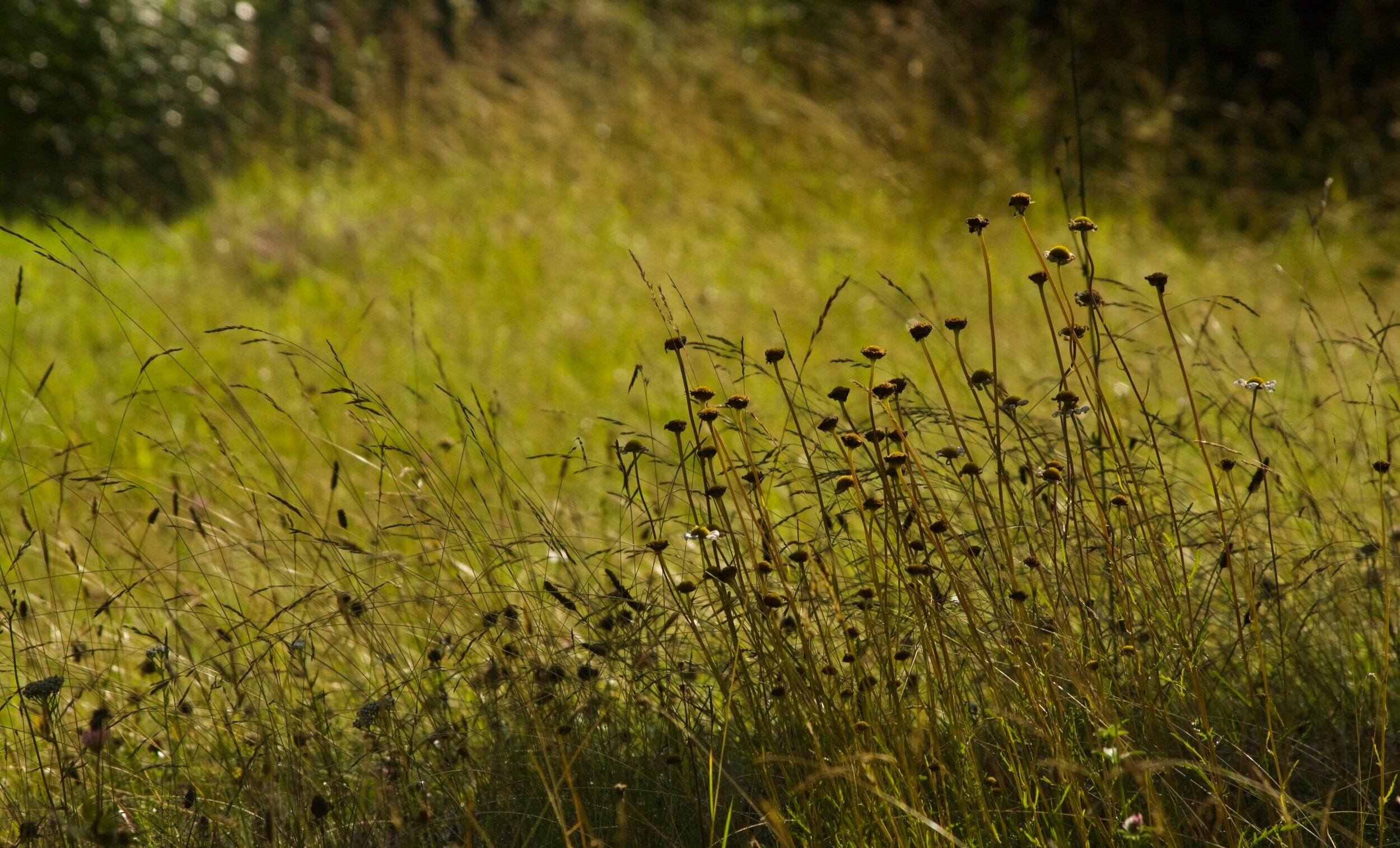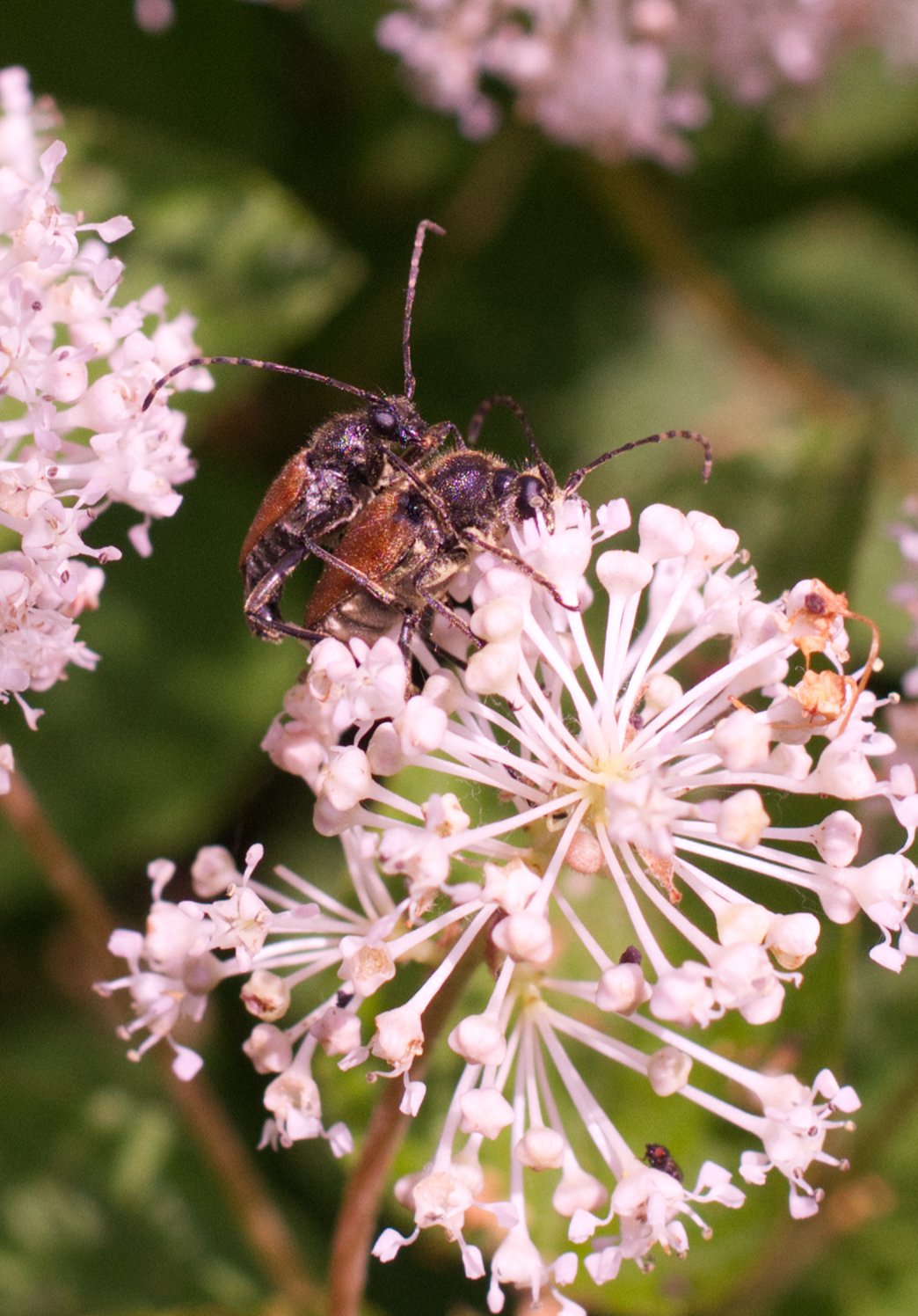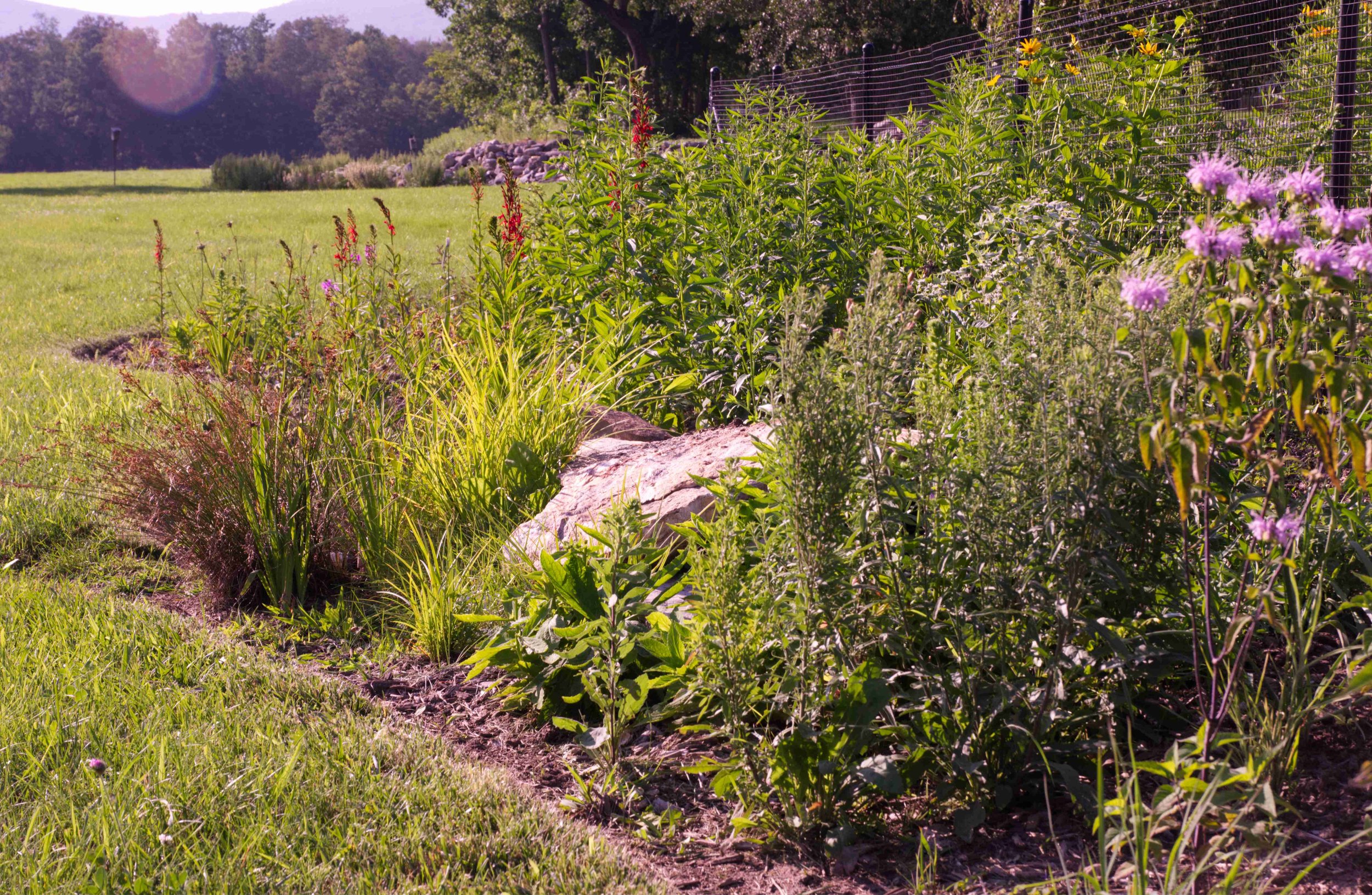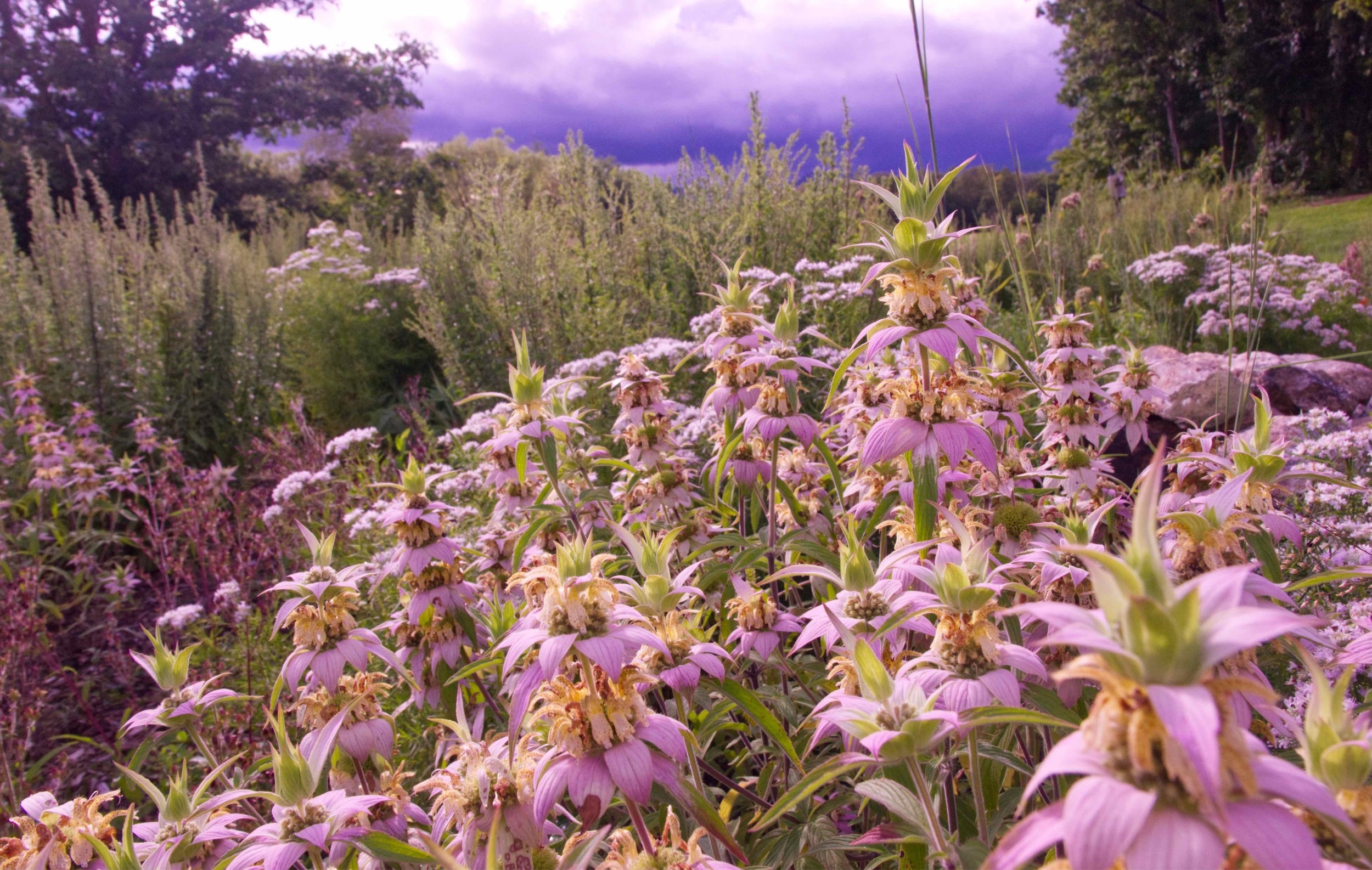
Wild Garden Expectations
What does a wild garden look like? And what can you expect as a wild garden grows in?
Gardening in a way that supports diverse, abundant living communities requires reorienting some of the expectations and norms around traditional western gardening. From plant selection to tidiness standards to timelines—choices in wild garden management must strike a balance between tailoring spaces for human use while cooperating with natural ecosystem processes.
Insects!
Attracting and supporting insects is the most impactful way to support living communities
Insects (and the other invertebrates) are one of the linchpins and key building blocks for almost every living system on the terrestrial side of Earth. They are a foundational component of most food chains and provide innumerable ecosystem services, from pollination to decomposition to pest control via hyper-specialized parasitism. A healthy ecosystem needs a healthy insect population.
Our culture teaches us to be fearful of insects, and there is sometimes wariness around the idea of trying to attract them. The reality is most of the insects we consider regular “pests”—mosquitoes, yellow jackets, paper wasps, biting flies—already make themselves at home in our suburban lawn-dominated landscapes. The vast majority of insects are solitary or harmless or both, so tiny or so shy that you are lucky to catch a glimpse of them at all. Just take wasps, which inspire dread in many of us. There are thousands of species of wasps in the northeast states and only a few sometimes sting people. I did not pay much attention to insects until adulthood, when I took an entomology class at a local college. When I learned how to look for them, and to see their astonishing diversity, a door into an entirely new world opened up. It has been one of the great gifts of my life.
Perhaps the most shocking thing about insects is that their numbers are in rapid decline globally, even in protected habitats. One study found that in 27 years flying insects in Germany declined by 75% and a separate study in a pristine Colorado alpine meadow recorded a 62% decline in insects from 1986 to 2020. You may have noticed evidence of this trend yourself if you remember having to clean insects off your car windshield a few decades ago, a rare necessity now. The good news is that with the right steps insects and invertebrates are delightfully easy to attract and provide homes for.
Two beetles on the flowers of a New Jersey tea shrub.
Native plants
Plants with long local histories are critical for supporting local living communities
When organisms live in the same place with the same community for a long time they develop complex interdependent relationships with each other. There are many insects who can only consume one specific type of plant, many birds who have developed to get the best nutrition from specific types of berries at specific times of the year. Among the many changes that European settlers have enacted upon the landscape in the past several hundred years is to displace massive amounts of the existing native vegetation and replace it with plants from primarily Europe and Asia. To support our local living communities a major priority is re-establishing community members that have long and deep relationships with the places we live. In gardening, this means choosing native plants.
Native plants like this flowering bee balm and cardinal flower provide the best food for local wildlife
Dense plantings
Plants overlap, creating layers of habitat in a small space
Traditional gardening often involves spacing plants apart so they can be admired as individuals, or at least as single species groupings. This rarely makes for good wildlife habitat. When left to their own devices (at least in an environment that is not severely resource limited—such as a desert or sand dune) plants grow into and over top of one another, both sharing and competing for space. Choosing to lean in to this naturally dense growth pattern achieves two important things: minimizing “weeds” and creating better habitat.
When gaps are maintained between plants those gaps are perpetual openings for weed growth—when a plant community fills in all the possible gaps it has a better chance of holding the space, reducing maintenance labor. The second reason is that a mix of species of variable shapes and sizes growing into one another creates more complex physical habitat with more niches and opportunities than a collection of individual plants.
A patch of spotted bee balm in a meadow planting as a summer storm approaches.
No chemicals, ever
Synthetic chemicals are at odds with healthy, sustainable communities
There are two common groups of chemicals used in landscaping: killing chemicals and fertilizers. Herbicides, pesticides, rodenticides, etc. are designed to kill and are inherently at odds with supporting a living community. Fertilizers are an attempt to manipulate the landscape to accommodate chosen plants. I firmly believe that we need to work the other way around, and match appropriate plants to local site conditions so they can grow independently, with as little intervention as necessary on our part.
In my own horticultural practice I occasionally use vinegar to kill small weeds in gravel paths, but otherwise use no chemicals ever. I believe the conservation community in general is far too liberal with killing chemicals. I am willing to consider their use in the rarest of ecological emergencies, but this will never describe residential landscaping.
Small bee imitating flies feed on Ohio spiderwort after a rain. Widespread chemical use has decimated insect populations.
Minimal “clean-up”
Cut backs in spring as necessary and no external mulch applications
The plant material in a garden is useful to living things long after it has died or become separated from the living plant. Birds use dead plant material for nests, and many insects overwinter in hollow plant stems. Some insects live their entire lives in the layer of decomposing plant material on the surface of the ground. When that same decomposing plant material finally breaks down it releases valuable nutrients and organic material into the soil.
Gardening in support of living things minimizes removal of old plant material. Any clean-up that is done for aesthetic purposes is conducted in the spring after dormant insects are likely to have woken up, and “clean-up” typically looks like cutting over remaining tall stems and chopping up bushy material so that everything lies relatively flat. I apply wood mulch sparingly when plantings are first installed to help with weed management and to retain soil moisture. After the first growing season the dead plant material becomes the mulch.
The diffrent greens of spotted mountain mint and Indian grass.
As large a garden as there is room for
If we want to live in healthy communities we must invert our lawn-dominated landscapes
There is now enough lawn in the United States that if lumped together it would cover the state of Texas. We have become accustomed to living in a landsacpe dominated by turf grass, with small scattered pockets of shrubs or flower beds. A more stimulating, engaging, and healthy human landscape would look like the reverse. Whether you are on a small urban lot or have several acres, orienting your space toward living things means sharing a significant portion of the land you live on with your non-human living community.
Having spent several years in landscaping I know that lawn scarcity is a real and emotional concern for many. In creating a wild garden a key part of the design process is often working with residents to think about which parts of their lawn they truly value, and which they could just as well do without.
The need to expand our garden footprints informs several logistical decisions in my practice. To keep installation costs and labor down I work with young plants—and to make long-term management reasonable I try to work with plant communities as they develop, fighting their natural inclinations as little as possible. In many American yards the location and selection of virtually every individual plant is controlled. It is only possible to control every plant if there is an extremely basic plan or extremely high labor inputs. To create bigger gardens we must let go of the control we exercise over them.
The delicate petals of pale purple coneflower, a near-native of the northeast.
Plants take several years to reach maturity
Small plants minimize disturbance and maximize garden size, but require patience
For a few reasons I work primarily with seeds and young plants. Working with smaller plants (and their smaller root balls) requires less disturbance of the soil (more on my focus on minimizing disturbance here). Young plants also reduce the cost of both plant materials and labor, enabling the creation of larger plantings. Working with seeds and young plants requires some patience as they grow in.
Timelines for plant growth vary based on site conditions, year-to-year variations in the weather, and the plant selection—but typically a planting of perennial plugs will be mostly mature within three years. After one year of growth a number of the faster growing species—such as mountain mints, black-eyed Susans, and goldenrods—will be at or near their maximum height with just some lateral filling in to do before they are fully grown. At this one-year mark slower growing species are still focused largely on root growth, with much more modest above-ground growth. Throughout the second year this disparity in growth rates shows up as unevenness and gaps within the planting. A few of the longest-lived perennials can take up to 5 year to fully mature.
Compared to perennial plugs seeds take longer still. Additionally, because they are not babied through germination and the first few months of their lives the variables affecting successful establishment increase greatly. In the first year after a field is seeded it takes an expert eye to notice much beyond a few of the faster growing species capable of taking off in one growing season. It’s usually in the second year that the bunch grasses get large enough to take shape and you start to get a hint of the texture to come.
Many perennials put on a shocking amount of growth in their first year.
Plant communities develop in unexpected ways
Creating larger gardens requires letting go of the control we exercise over them
It is rare that even a well-thought out planting plan works out just as envisioned. In a diverse planting there is usually at least one species that really thrives and one species that struggles relative to expectations. When managing a wild community over the long term it is necessary to pick our battles and stay focused on the main objectives: like ensuring only shorter perennials grow where we want an open view, or that strong-stemmed species grow alongside a path so they don’t flop as frequently.
One of the great joys of a wild garden is that from the first day it goes in it will never quite be the same two days in a row. There is tremendous pleasure to be had in getting to know the plants as they get established, and then watching over the years as they sort out who is going to grow where and eventually develop into a community.
This foxglove beardtongue, a near native of the northeast, was broadcast seeded in the fall of 2021 and first flowered in 2023.







